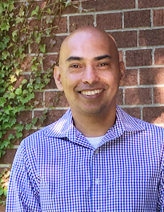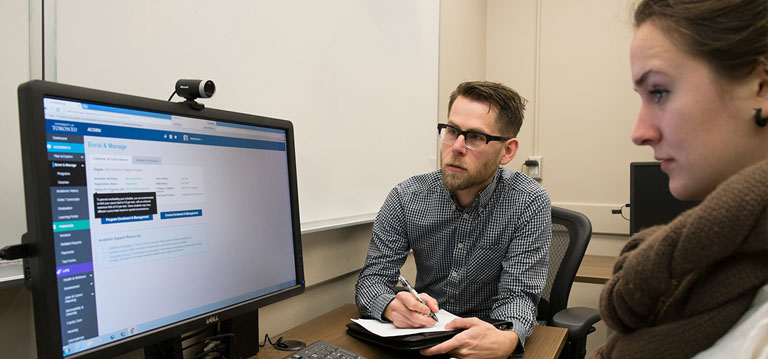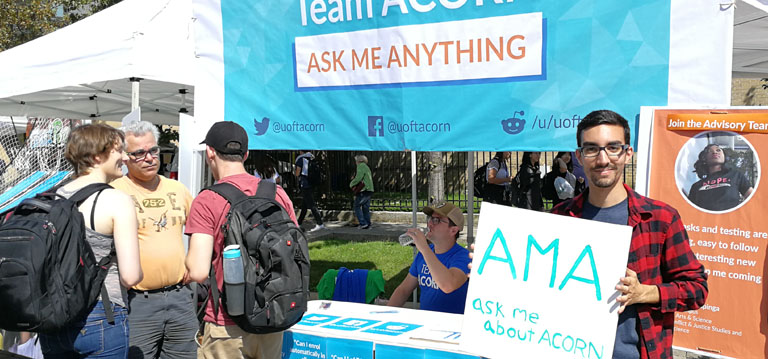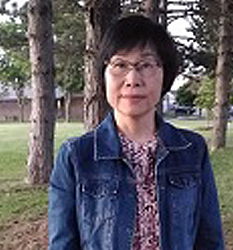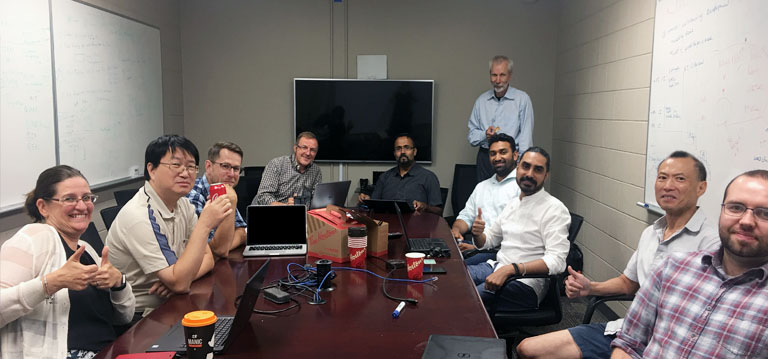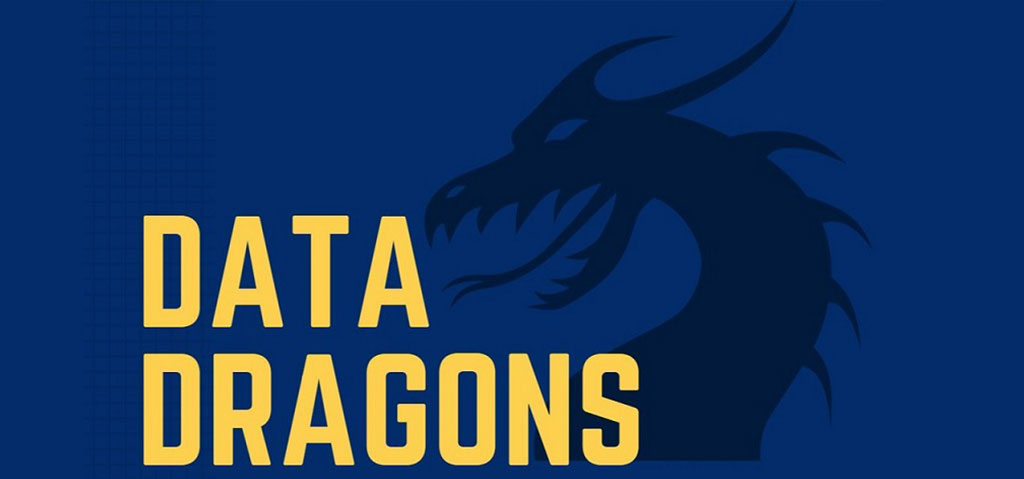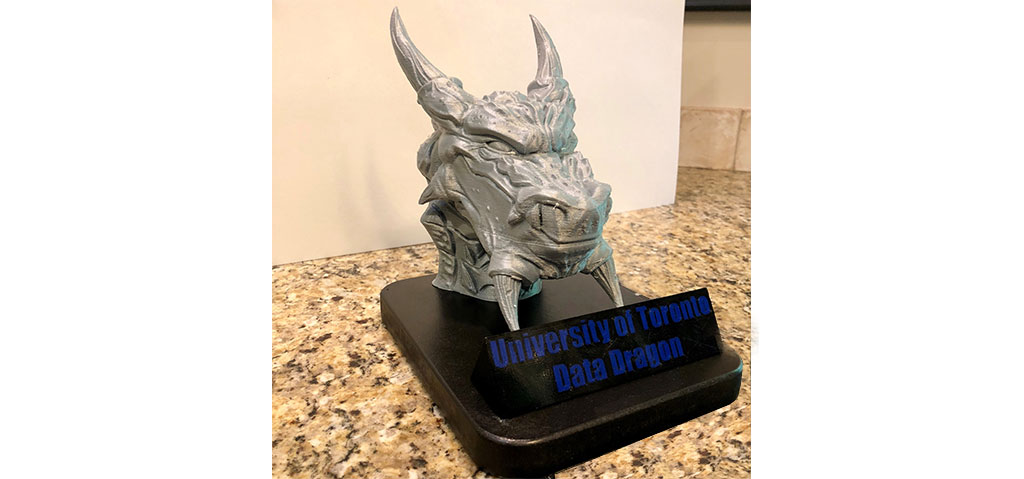After three years, 2 million lines of converted code and over 140 new servers, the Next Generation Student Information Services (NGSIS) Platform Modernization Project is set to take centre stage this fall to enhance services for staff and students.
The refreshed system will allow 15,000 students to access the system via ACORN simultaneously, versus the current 700. It will also open up the potential for live integration between divisional systems and ROSI, and ensure U of T stays at the forefront of technological innovation.
“This project is set to revitalize the student information system and provide an improved student experience,” says Frank Boshoff, Senior Manager, Technical Solutions and Architecture with EASI. “We had reference architectures, but ultimately we had to decide on the hardware and how to integrate it with existing systems – this project has required a ton of creativity and hard work from a dedicated team.”
The project spans all of U of T’s Information Technology Services and includes Enterprise Applications & Solutions Integration (EASI), Enterprise Infrastructure Solutions (EIS), and Information Security.
While the core team consists of seven staff, with three technical leads, the broader testing team extends to over 30 people.
So far, the team has completed the initial build, system testing, system integration and performance testing. They will be conducting dry run cutovers in late September and October and are planning to go live on November 19.
“We want the transition to the new system to be business as usual,” says Boshoff, who designed the architecture of the new system. “Having said that, all the power users and student system administrators across U of T over the next one to five years will start to realize the potential of the new system.”
Here’s what the technical leads have to say about making such a large-scale project come to life.
Joe Bate – Information Security Architect, Information Security
My role on this project has been to review and enhance the application architecture’s security controls and to securely connect all of the components. As part of these enhancements, we are moving away from separate RACFids to a UTORid integrated architecture – to reduce complexity, increase security and enhance the end-user experience.
This project has created a cultural shift at U of T. We’re taking 20 years of legacy and modernizing it. It’s been a great challenge to design, navigate, test and configure the new system – and part of that challenge is to ensure that the new system is more secure than the current one.
As part of this effort, we’ve moved from the single 1,014 kg mainframe to over 100 different components, including virtual machines, firewalls and security gateway appliances. We’ve also isolated our non-production environments and split our system into four tiers to keep data secure.
We’ll be giving users indirect access to the data through new, safer independent channels, allowing staff to perform improved operational and analytical reporting in near real time.
There’s a lot of individual talent on this team, but it’s really the collective that’s responsible. Part of this project involves breaking down silos, developing a more cohesive strategy and offering better service to our clients.
Sarosh Jamal – Software Infrastructure and Operations Lead, EIS
Over the past 18 months, I’ve translated and tested the technical architecture relating to our student systems platform. I work with various teams within EASI, EIS and Information Security to ensure the application code that drives this system is deployed, stable, secured and integrated on the servers and components I help build, configure, monitor and maintain.
The co-location of the team on a solution of this scale, and one with such a critical mandate, has enabled us to formulate appropriate service channels and map out workflows in a more efficient, reproducible and optimal way. As large as the project is, it provides us with guidelines and a template for dealing with future projects and application workflows.
The project has been a huge undertaking and learning opportunity for all of us involved. I’ve found that coordinating so many teams and parts of the project to be rewarding, especially now as we are seeing the results of the last several months of work.
Also recently, all of ITS has been part of team building exercises – providing feedback to help develop strategies for the vision of the division. There’s this fun, positive energy around the workflow and it doubly renews our efforts.
Haroon Rafique – Technical Lead, Solution Design, EASI
As technical lead, I make sure that all of the software will run properly on top of the infrastructure and networks. I also ensure that over 60 existing systems will integrate properly with ROSI.
I directly oversee two people, but for this project I’ve been managing 10 to 15 people, depending on what resources are required at different times.
We follow an agile process, and have divided our work into code-based teams and sprints. It’s important to break down work into bite-sized chunks, so we can figure out the best solution as quickly as possible. If we start heading down the wrong path, we find this out quickly and can change course.
This project has been very complex – especially figuring out a solution for student correspondence. We dealt with more than 300 admittance letters and they had to be entirely accurate. We also had to convert a lot of batch processes that were native to the mainframe – this would include rolling students over from one year to the next. There are more than 450 batch jobs of varying complexities and sizes.
We realize that this system is the livelihood of U of T, and we’re making every effort to make sure that the end result is a great product.
Philip Millenaar – NGSIS Platform Modernization Project Manager
My job has been to create a project plan and hone in on unresolved tasks, bugs and issues. We have weekly progress and daily stand-up meetings to make sure everyone’s on task.
I’ve worked on a variety of projects with the University and whenever you have projects with reconciliations, data duplication and a lot of integration points, they become complex. This project is no exception.
We’re moving off of a longstanding platform and we’re moving to a new code base – this all requires a ton of testing. We took the time to document the test cases and we have been following project and test methodology best practices. We have performed over 2,500 tests throughout different cycles and the team has done a fantastic job.
Throughout the project, we’ve been in touch with the broader U of T community through divisional visits, forums, user acceptance testing, and we’ll be ramping up our training materials in the near future.
Soon we won’t be held back by an aging system and we’ll be able to realize efficiencies and cost savings.
To learn more about the project, visit www.sis.utoronto.ca/ngsis/




